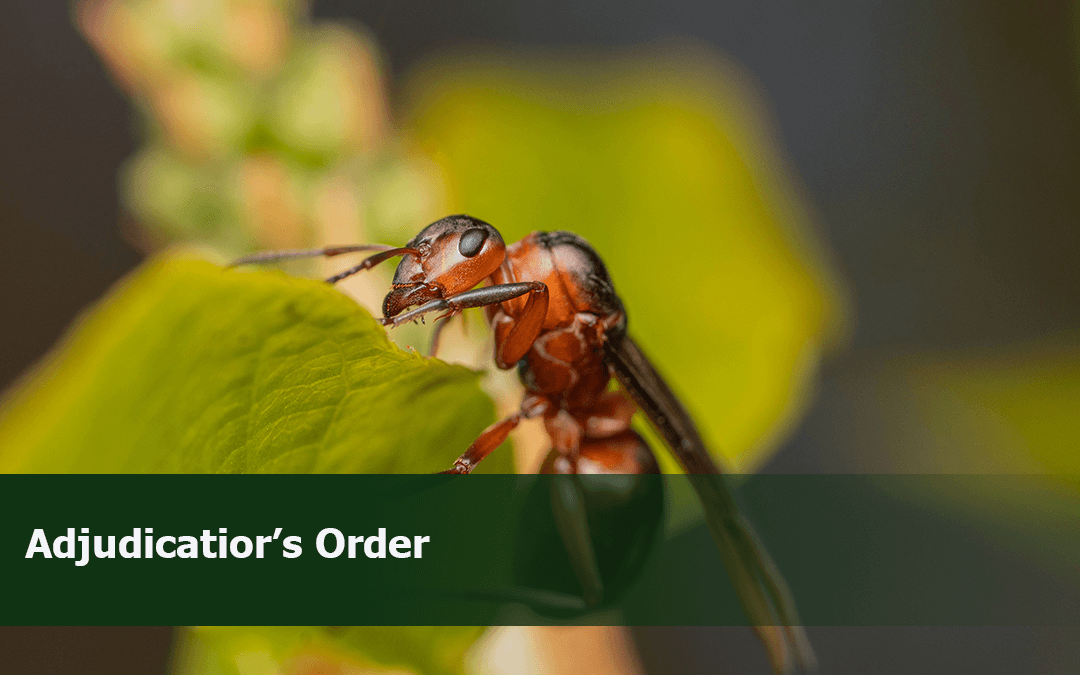In this edition of Strata Today, we have included an article from the Commissioner for Body Corporate and Community Management in regards to who is responsible for termite damage if found within the boundaries of a lot. We felt it only fitting that we include an Adjudicators Order on this same topic and what the Adjudicator ruled in this instance.
For the sake of clarity, we note that the application states that the scheme is registered as a Building Format Plan (BFP), meaning that the lot boundaries are defined by the structural elements of a building including the floors, walls and ceilings. The Adjudicator has noted;
“In a BFP the body corporate will be responsible for maintaining in good condition items such as railings and balustrades in the boundary of a lot and common property; doors, windows and fittings in a boundary wall separating a lot from common property; and roofing membranes that are not common property but provide protection for lots or common property.
The body corporate is also responsible for maintaining foundation structures, roofing structures providing protection, and essential supporting framework (like load-bearing walls), in structurally sound condition even if they are part of the lot.”
The applicant, being a lot owner within the scheme, was seeking an order from the Commissioners Office that a the decision to defeat a motion at an Extraordinary General Meeting be ruled invalid as it was unreasonable and that the Body Corporate attend to repairs necessary to rectify the damage that had been caused as a result of termite infestation. The applicant claimed that due to a failure to undertake annual inspections, termites entered the unit and caused extensive damage.
It is worth noting, at this point, that in the order made, the adjudicator advised:
“Pursuant to section 281, if damage has occurred to a lot because of a failure to maintain or rectify a defect in something that is the responsibility of the body corporate or another owner, then the responsible person would be liable for rectifying the damage. So, a body corporate or an owner will be liable to rectify any damage arising from its failure to effect adequate pest prevention on areas of its responsibility. I note that an adjudicator may order reimbursement of repairs already undertaken up to a maximum of $10,000 and may require a responsible person to undertake repairs up to a maximum of $75,000.”
Submissions were sought from the Committee for the scheme, who provided a response to the application along with a report from a pest control company with their view on how the termite infestation occurred. This contradicted a report that the owner provided.
The adjudicator, in reviewing all of the information made available by the applicant and the committee, noted that the Body Corporate appeared to have failed in its maintenance responsibilities regarding termite prevention at this scheme, however also noted that by not arranging internal inspections of the unit or the exclusive use area the owner of the lot may also not have met his maintenance requirements either.
On the basis that the Body Corporate did not properly maintain the termite barrier and failed to carry out regular termite inspections, the Body Corporate bears the primary responsibility for termites entering the Lot regardless of the point of entry and as such ruled that the Body Corporate is responsible for carrying out all works reasonable necessary to rectify the termite damage to the Lot and must do so within 3 months of this order made.
Has your scheme been undertaking regular termite inspections to the Common Property and is there a termite barrier in place?
The full order can be read – http://www8.austlii.edu.au/cgi-bin/viewdoc/au/cases/qld/QBCCMCmr/2019/125.html?context=1;query=termite%20damage;mask_path=au/cases/qld/QBCCMCmr
And more information can be obtained by visiting the Commissioners Office Website –https://www.qld.gov.au/law/housing-and-neighbours/body-corporate/maintenance/other
